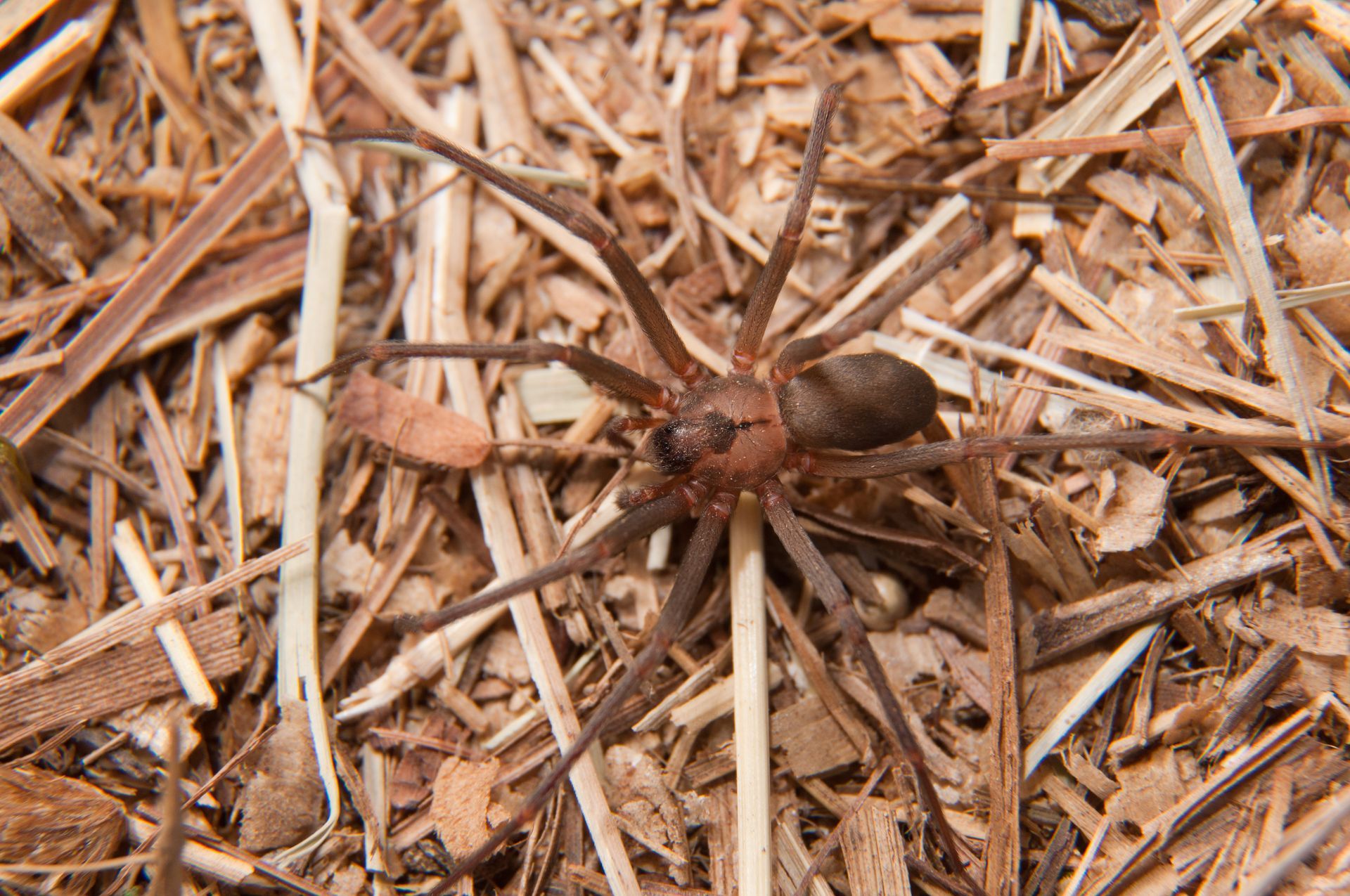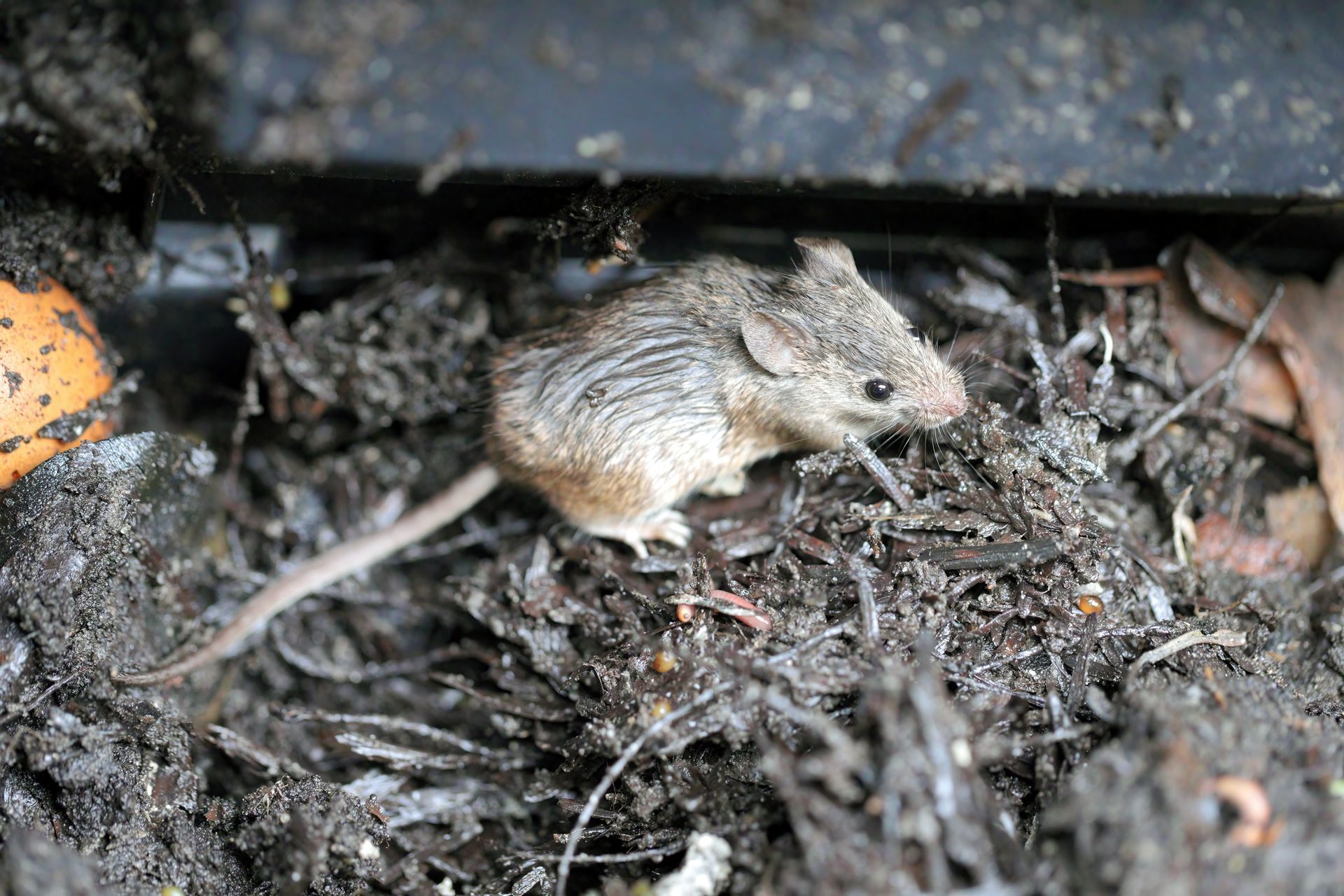Where Do Brown Recluse Spiders Live?

Brown recluse spiders are predominantly found in the south-central and midwestern United States. These areas include the Gulf States and reach as far north as Nebraska to Ohio. In terms of habitat, brown recluse spiders show a preference for secluded and undisturbed environments. In outdoor scenarios, they tend to inhabit areas beneath rocks and logs because these places provide them with ample shelter and protection from predators. However, they often find their way indoors where they tend to dwell in dark corners of undisturbed hiding spots like boxes, furniture, and storage areas like closets, basements, and cellars. Brown recluses are especially drawn to cardboard as it mimics their natural preference for rotting tree bark. EcoGuard Pest Management understands where brown recluse spiders hide and emphasizes the importance of thorough inspections in suspected harborage areas to effectively manage and control brown recluse infestations.
Where Can You Find Brown Recluse Spiders?
Brown recluse spiders (Loxosceles reclusa) are indigenous to the United States with their native habitat predominantly spanning sixteen states that include:
- Alabama
- Arkansas
- Georgia
- Illinois
- Indiana
- Iowa
- Kansas
- Kentucky
- Louisiana
- Mississippi
- Missouri
- Nebraska
- Ohio
- Oklahoma
- Tennessee
- Texas
Despite occasionally being found in non-native regions, they have no established populations outside this traditional range. This includes California, where sightings are rare and are often the result of misidentification caused by a closely related recluse spider relative.
Brown Recluse Habitat
Brown recluse spiders primarily reside outdoors in woodpiles where they can hide under rotting tree bark which is their preferred natural habitat. They can also be found in human-inhabited environments like homes and businesses. They have a particular affinity for cardboard boxes because they resemble the bark on trees. This makes it easy for them to be accidentally transported to areas outside their native range. This can result in brown recluses sometime being found in states they don’t belong in due to people moving or packages being sent outside of states they are commonly found.
Where Do Brown Recluses Hide Indoors?
Brown recluse spiders are known for their preference for seclusion and typically inhabit dark and undisturbed areas within homes. They are extremely adaptable and can survive in freezing basements during winters and hot attics in the summer. Common indoor hiding spots include tight spaces in attics, basements, as well as within boxes, tires, and furniture. They tend to seek refuge in storage areas that are left undisturbed for long periods but will occasionally wander into items like garden gloves, clothing, and shoes. While adult females usually stay close to their nests, males and older juveniles may travel farther away in search of food. Other reasons why brown recluses might leave their nests include overcrowding or if the nest is disturbed by human activity. This sometimes occurs when homes are cleaned or if the area is treated with a pesticide application.
What Do Brown Recluses Look Like?
Brown recluse spiders are typically between ¼ - ½ inch long and they are distinct in their appearance and can be identified by several key characteristics. Their bodies are a light brown and covered in tiny hairs that give it a velvet-like appearance. Their legs are also covered in fine hairs and are held in a slanting position when the spider is at rest. One of the most notable features is the violin shaped marking on their cephalothorax (the fused head and thorax). This marking is often darker in mature spiders and does not always clearly resemble a violin. Another definitive characteristic of the brown recluse is its eye arrangement. Unlike most spiders that have eight eyes, brown recluses possess only six eyes that are arranged in a semicircle around the front of the cephalothorax. This unique eye pattern is a reliable identifier for distinguishing brown recluses from other spider species.
Brown Recluse Spider Habits
Brown recluse spiders typically rest near their webs during the day and are mainly active at night when they hunt for prey. Their diet mainly consists of insects that are abundant in the regions they occupy like cockroaches and crickets. Another surprising ability of brown recluses that speak to their durability and persistence is that they can survive without food for several months. This combined with their adaptability to extreme temperatures make them extremely difficult to get rid of.
The reproductive cycle of the brown recluse is noteworthy because they have the unique ability to mate just once and produce eggs throughout their lifespan. The peak of their reproductive period spans from May to July, during which they generate several egg sacs that can contain up to 50 eggs each. These eggs hatch in approximately a month and the spiderlings take roughly a year to reach maturity. This efficient reproductive strategy means that a single female can establish a large infestation in a new location quickly. Once established, brown recluses can prove challenging to control because of their ability to endure up to six months in conditions of extreme drought and starvation. This persistent nature and rapid reproduction highlight why professional intervention is needed to manage brown recluse infestations.
Are Brown Recluses Aggressive?
Brown recluse spiders are generally not aggressive. When threatened the brown recluse's defensive behavior tends to be more passive than confrontational. These spiders are far more likely to play dead or run away rather than attack. They typically bite only when they have no other options or are inadvertently pressed against human skin. This often occurs in scenarios where a person rolls over onto one in their sleep or when putting on clothing, gloves, or shoes that have become a hiding spot for the spider. This is why it is important to be cautious with items that have been undisturbed for a while or left on the floor because these items can become unexpected shelters for brown recluses. These incidents are much more common during the summer months when human activity increases where brown recluses are likely to be hiding. While brown recluses are not inherently aggressive, their tendency to dwell in close proximity to human habitats increases the potential for harmful interactions. Therefore, awareness and preventive measures are key to reducing the risk of unwanted encounters with these spiders.
Are Brown Recluses Dangerous?
Brown recluse spiders are known for possessing venom that is more potent than a rattlesnake's. However, they deliver it in much smaller quantities that are less harmful to humans. This combined with their non-aggressive nature means that brown recluses are more scary than dangerous. As potentially dangerous as brown recluse bites can be, there are no reported deaths in the US that have been attributed to brown recluse bites. However, bites can be painful, and require medical attention because treatment can significantly reduce the risk of bacterial infections and aid in faster recovery.
What Does a Brown Recluse Spider Bite Look Like?
A bite from a brown recluse spider typically begins as a red mark identified by 2 faint fang impressions. This area typically develops into a bull's-eye pattern in a few hours with a central red spot surrounded by white skin then another outer red ring. After more time passes, the center of the bite may harden, turn white, and form a blister. This blister may eventually turn blue or black as the tissue infected by the brown recluse venom dies.
Most brown recluse spider bites don’t require medical attention and heal on their own within a few days to a couple weeks. Roughly 90% of brown recluse bites heal with minor symptoms that range from mild itching to pain at the bite site. However, instances where the bite reaction is much more severe depend on the amount of venom injected and the sensitivity to the bite. Some individuals may experience severe symptoms that include:
- Fever
- Nausea
- Muscle pain
- Convulsions
- Necrosis
Necrosis is the most severe reaction and is identified by the tissue around the bite dying and forming a large open wound. These wounds typically take much more time to heal and leave scars. They can also require extensive treatment that includes pain killers, anti-inflammatories, antibiotics, and skin grafts.
How to Prevent Brown Recluse Spiders
Preventing brown recluse spider infestations requires some habitat modification to eliminate places where they can hide. A few steps to take include:
Outdoors:
- Minimize debris such as woodpiles, boxes, and trash, particularly close to the house.
- Seal entry points around doors, windows, electrical conduits, and plumbing fixtures.
- Install weather stripping and door sweeps to effectively close off access points.
- Outdoor equipment like gardening gloves should be stored in tightly sealed bags or bins.
Indoors:
- Check furniture and storage areas regularly for irregular webbing.
- Position beds away from walls, eliminate bed skirts, and keep the area beneath the bed clear.
- Avoid leaving clothing and shoes on the floor.
Chemical control methods can sometimes prove ineffective due to the spider's ability to avoid treated surfaces. Non-chemical methods like sticky traps are far more effective for capturing brown recluse spiders in the event of an infestation.
Contact EcoGuard Pest Management if You Are Dealing with Brown Recluse Spiders
If you suspect the presence of brown recluse spiders in your home or are seeking preventive measures against these pests, EcoGuard Pest Management is here to help. Our team of experienced professionals is equipped with the expertise and tools necessary to effectively manage and eliminate brown recluse infestations. Our guarantee ensures that your home remains a safe and comfortable environment. Contact EcoGuard Pest Management today for a comprehensive brown recluse solution tailored to your specific needs.
Where Do Brown Recluse Spiders Live FAQs
Where are brown recluse spiders found the most?
Brown recluse spiders are native from the gulf states to Nebraska and Ohio. Their natural habitat is outside where they prefer dry undisturbed areas such as woodpiles and rotting logs. Indoors you’re more likely to find them hidden in areas like garages, crawlspaces, closets, and under furniture.
What attracts brown recluse spiders in the house?
Brown recluse spiders are attracted to undisturbed, cluttered areas in homes that provide a safe environment free from disturbance. They often seek out basements, closets, garages, and attics and anywhere else there are boxes, old clothing, or other rarely disturbed items. Reducing clutter and maintaining cleanliness can help deter these spiders from settling in a home.
How likely is a brown recluse to bite?
Brown recluse spiders are generally not aggressive and are unlikely to bite unless provoked or pressed against the skin. Most bites occur accidentally, such as when a spider is trapped against a person's skin by clothing or bedding.

















